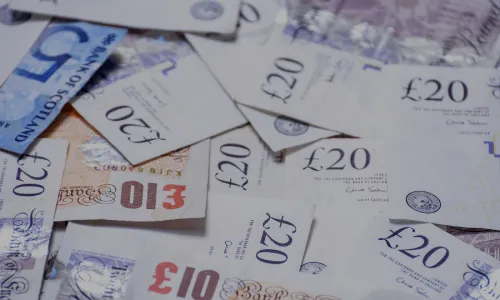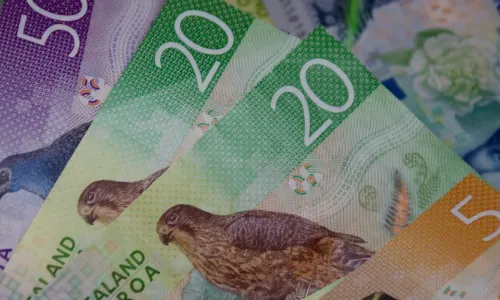Key Takeaways about the Indonesian Rupiah (IDR)
The Indonesian Rupiah (IDR) is a fascinating currency with a rich history and significant impact on Indonesia's economy. Understanding its nuances not only provides insights into the country's financial landscape but also highlights important economic trends and policies.
This page presents 10 intriguing facts about the Indonesian Rupiah, backed by comprehensive statistics and data, offering a detailed look into this essential aspect of Indonesia's financial system.
1. Introduction of the Indonesian Rupiah (IDR)
The Indonesian Rupiah (IDR) reflects the country’s economic and political evolution since independence. It became Indonesia’s official currency in 1949, replacing the Dutch East Indies guilder after the end of colonial rule.
Over the decades, the Rupiah has been shaped by periods of inflation and reform. A major redenomination in 1965 simplified the currency by replacing 1,000 old Rupiah with 1 new Rupiah. Later, the Asian Financial Crisis (1997–1998) marked a turning point, triggering deep economic reforms after a sharp devaluation.
Since then, Indonesia’s central bank has focused on monetary stability. In recent years, the Rupiah has remained relatively stable compared to its historical volatility, reflecting stronger economic management and financial resilience.
- 1949: Introduction of the Indonesian Rupiah, replacing the Dutch East Indies guilder.
- 1965: Redenomination of the Rupiah, exchanging 1,000 old Rupiah for 1 new Rupiah.
- 1997-1998: Asian Financial Crisis, leading to a significant devaluation of the Rupiah.
- 2023: Stabilised exchange rate, averaging around IDR 15,000 per USD.
2. Currency value
The Indonesian Rupiah (IDR) reflects Indonesia’s economic development and position in Southeast Asia. While it is a low-denomination currency compared to major global currencies, it has become more stable over time thanks to monetary policies aimed at controlling inflation and supporting trade.
This stability is important for tourism, imports, and exports, as it helps keep prices predictable for both locals and international visitors. The Rupiah’s value remains closely linked to global economic trends, commodity prices, and foreign investment flows.
3. Inflation Data
Indonesia has gone through periods of high inflation in the past, most notably during the Asian Financial Crisis of the late 1990s, when price instability significantly affected the Indonesian Rupiah (IDR).
Since then, consistent monetary policies have helped stabilize inflation, improving confidence in the currency. Today, controlled inflation supports the Rupiah’s reliability for daily use and international exchange.
4. Bank notes and coins
The Indonesian Rupiah (IDR) is issued in a wide range of denominations suitable for everyday spending and larger payments. Current banknotes include IDR 1,000, 2,000, 5,000, 10,000, 20,000, 50,000 and 100,000, with the IDR 100,000 note being the highest and most commonly used for higher-value transactions.
Indonesian banknotes feature national heroes and cultural motifs, along with modern security elements such as watermarks and security threads. Coins are issued in IDR 100, 200, 500 and 1,000 denominations and are mainly used for small purchases. Regular updates by Bank Indonesia help improve durability, security, and ease of use across the currency system.
5. Economic Impact
The Indonesian Rupiah (IDR) plays an important role in Indonesia’s economy, influencing trade, inflation and investment. Its exchange rate affects the cost of imports and exports: a stronger IDR lowers import prices, while a weaker Rupiah can boost exports by making Indonesian goods more competitive globally. In 2022, Indonesia recorded a trade surplus of USD 54.53 billion, supported in part by favorable currency conditions (Bank Indonesia).
Currency movements also impact inflation and investor confidence. A weaker IDR can push up import costs and consumer prices, while stability helps attract foreign investment. In 2022, Indonesia received USD 43.2 billion in foreign direct investment, reflecting confidence in the country’s economic outlook (IMF). Bank Indonesia actively manages the Rupiah through monetary policy to support price stability and sustainable growth.
6. Exchange Rate History
The historical exchange rate of the Indonesian Rupiah (IDR) against the US Dollar highlights key moments in Indonesia’s economic development. The most significant fluctuation occurred during the Asian Financial Crisis (1997–1998), when the Rupiah sharply depreciated to over IDR 16,000 per USD, triggering major economic reforms (Bank Indonesia).
Since then, Indonesia has focused on strengthening monetary policy and financial stability. While global events — such as the 2008 financial crisis — caused temporary volatility, the IDR has remained relatively stable in recent years. As of 2023, the exchange rate has averaged around IDR 15,000 per USD, reflecting improved economic fundamentals and active management by Bank Indonesia (IMF). This stability supports trade, investment and confidence in the Indonesian economy.
7. Central Bank Policies
Bank Indonesia (BI) plays a central role in maintaining the stability of the Indonesian Rupiah (IDR) through monetary policy and market intervention. One of its main tools is the benchmark interest rate, which BI adjusts to control inflation and support economic growth. As of mid-2023, the policy rate stood at 4.75%, reflecting a balanced approach between price stability and economic activity (Bank Indonesia).
BI also intervenes in the foreign exchange market to smooth excessive currency volatility and maintains strong foreign exchange reserves to protect the Rupiah from external shocks. In 2023, Indonesia’s reserves were around USD 144 billion, providing a solid buffer against global market fluctuations. Together, these measures help reinforce confidence in the IDR and support Indonesia’s broader financial stability.
8. Counterfeit Issues
Counterfeiting of the Indonesian Rupiah (IDR) is relatively uncommon, thanks to strict prevention measures led by Bank Indonesia (BI). Modern IDR banknotes incorporate advanced security features such as watermarks, security threads, holograms, and color-shifting inks, making them difficult to reproduce.
BI also works closely with banks, currency exchange providers, and law enforcement to monitor suspicious activity and educate the public on how to recognize genuine notes. These combined efforts help maintain trust in the Rupiah and ensure the security of cash transactions for both locals and travelers.
9. Digital mobile payment and growth
Digital and mobile payments are growing rapidly in Indonesia, reshaping how people pay and manage money across the country. Thanks to widespread smartphone use and improved internet access, platforms such as GoPay, OVO and DANA have become everyday tools for paying in shops, transferring money and settling bills.
This shift has been strongly supported by Bank Indonesia and government initiatives promoting cashless payments, alongside a major acceleration during the COVID-19 pandemic due to demand for contactless transactions. Despite this growth, cash — especially Indonesian Rupiah banknotes — remains widely used, particularly in local markets, smaller businesses and rural areas, making IDR an essential currency for travelers.
10. Future projections
Looking ahead, the Indonesian Rupiah (IDR) is expected to remain relatively stable, supported by steady economic growth and prudent monetary policy. Indonesia’s economy is forecast to grow at around 5–6% annually, driven by domestic consumption and investment, which helps underpin confidence in the currency (IMF).
Bank Indonesia’s focus on inflation control, strong foreign exchange reserves and fiscal discipline are key factors supporting the IDR against major currencies. While external risks — such as global economic slowdowns or commodity price volatility — may cause short-term fluctuations, the Rupiah is generally seen as resilient within Southeast Asia.
At the same time, Indonesia’s ongoing digital and financial transformation is improving economic efficiency and financial inclusion. Although cash usage may gradually decline in the long term, the IDR will continue to play a central role in daily transactions and travel spending across the country.
Table of contents
- Historical Background
- Currency Value
- Inflation Data
- Banknotes and Coins
- Economic Impact
- Exchange Rate History
- Central Bank Policies
- Counterfeit Issues
- Digital and Mobile Payment Growth
- Future Projections
Need to exchange AUD to Bali Money?
Order your currency online and enjoy 0% commission and the best exchange rates online.
Quick insights about the Indonesian Rupiah
Short answers to common questions travelers and currency users often ask.
Cash is deeply embedded in daily transactions, especially outside major cities, where digital infrastructure may be limited.
The Rupiah has never undergone a redenomination. Inflation over decades has increased face values while keeping the currency structure intact.
While it has experienced volatility historically, recent monetary policy has focused on maintaining stability and investor confidence.
Indonesia is one of Australia’s closest neighbors, with strong ties in tourism, education and trade — making IDR relevant for travel and regional economics.
The Indonesian Rupiah in a regional context
The Indonesian Rupiah reflects the evolution of a fast-growing economy balancing tradition and digital innovation. From its post-independence origins to its role today, IDR remains a key currency in Southeast Asia.
For Australians, understanding the Rupiah helps put travel costs, regional trade, and economic movements into perspective — especially given Indonesia’s proximity and importance in the Asia-Pacific region.
Read about other currencies
10 interesting facts about Euros
The euro stands as one of the world's most influential currencies, symbolizing the economic integration and stability of the Eurozone. In this post, discover 10 interesting facts about the euros.
10 interesting facts about GBP
In this post, we reveal ten amazing facts about the GBP that will help you understand its importance on the world stage and how it affects the choices you make about investments and travel.
10 interesting facts about NZD
The New Zealand Dollar, also known as "Kiwi", is a vital component of the world economy. In this post, discover 10 interesting facts about NZD's history, usage and impact on New Zealand society and economy.


